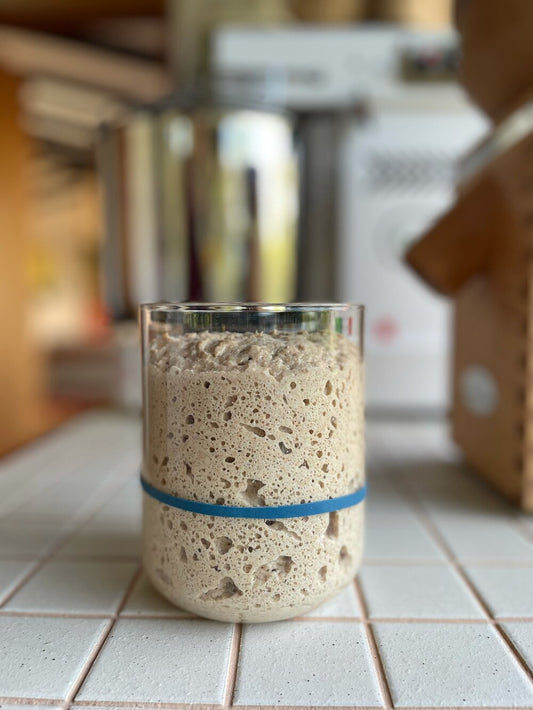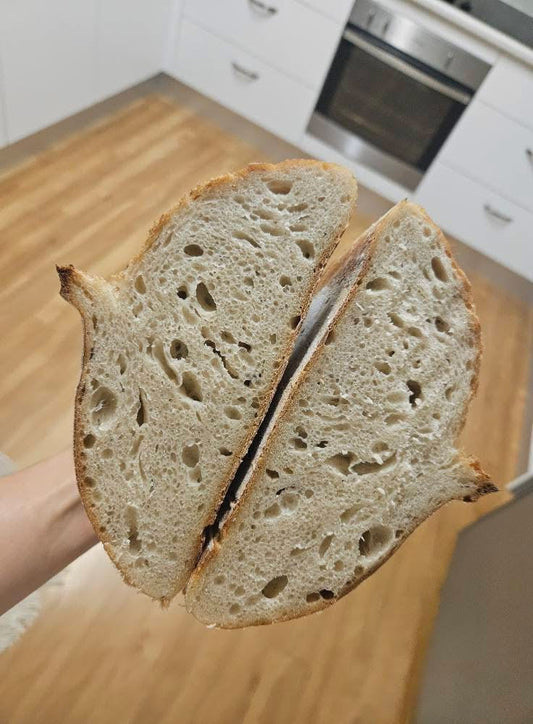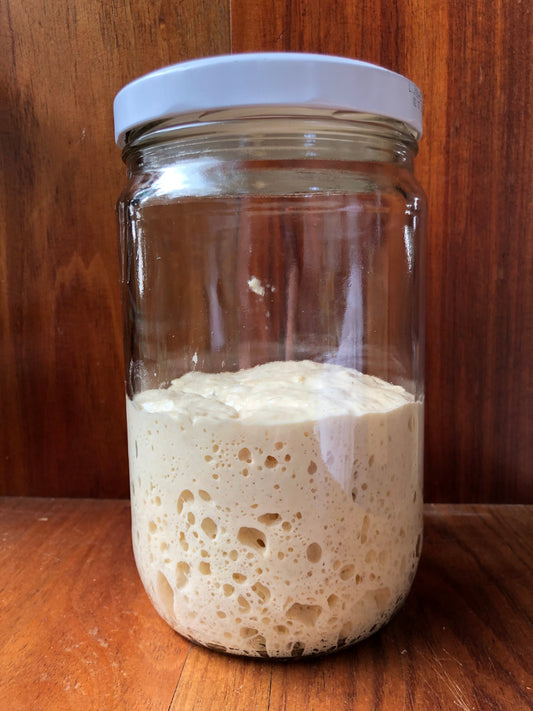
Maintaining A Healthy Gluten-Free Sourdough Starter
For best results, we recommend always using our White Gluten-Free Bread Flour to feed & maintain your starter.
A healthy, active gluten-free sourdough starter is the heart of every successful gluten-free loaf. Whether you’ve just started your sourdough journey or you’ve been nurturing your starter for months, proper maintenance is what keeps it strong, bubbly, and ready to bake.
What Is A Gluten-Free Sourdough Starter
A gluten-free sourdough starter is a living culture made from flour, water, wild yeast, and beneficial bacteria. Unlike wheat-based starters, it doesn’t rely on gluten for structure — instead, it depends entirely on the balance between yeast and bacteria to stay active and healthy.
These microorganisms are most active at room temperatures between 24–26ºC, about two hours after feeding. This is when your starter will be at its bubbly best — ideal for baking.
Understanding Your Gluten-Free Starter
Once your starter is active, you don’t need to feed it daily unless you’re baking everyday. If you’re not using it often, daily feeding can waste flour and create excess starter. It’s best to keep active starters in the fridge and follow a few simple maintenance steps — which we’ll cover shortly.
Keeping Starter In The Fridge
Our preferred and recommended way to store your starter is in the fridge.
Here’s how to do it smartly:
-
Once active, keep a small jar of starter in the fridge, about a tablespoon is sufficient.
-
When you’re ready to bake, take it out, wait for it to come to room temperature, feed it once or twice to wake it up, and use what you need.
-
After baking, scrape down the jar, leave a tiny bit inside, feed it a little water and flour, let it sit for a couple of hours at room temperature, then pop it back in the fridge.
Do this weekly, and your starter will stay strong — no discard, no stress.
Some Real World Examples
There are two common ways gluten free bakers keep their starters healthy.
1. Keep Baking Regularly (Starter Builds)
A starter build is used when you don’t have enough starter for your bread recipe. Most recipes include instructions for this at the beginning to make sure you have enough fresh, active starter to bake with—and still have some left over to keep it going. You only need to keep as little as 1 tablespoon of starter to continue feeding & keep alive.
For example, gluten-free sourdough recipe includes a starter build step to ensure there’s plenty of active starter for the mix.
2. Maintenance Feeds
If you’re not baking, gluten-free starters should be kept in the fridge and given a maintenance feed once a week. This keeps the starter healthy and prevents it from becoming overly sour—or, in rare cases, mouldy.
To reduce waste, keep these feeds small, using a 1:1:1 ratio of starter, flour, and water (equal parts by weight).
Example of a maintenance feed:
5g of starter (you may need to discard)
5g flour
5g water
Combine everything and mix well. Let it develop for a couple of hours, then store back in the fridge in an air-tight container.
What a Healthy Starter Looks Like
A healthy gluten-free sourdough starter should:
-
Double in size within 4–6 hours of feeding
-
Have a pleasant, tangy smell (not sour or vinegary)
-
Show bubbles throughout, with a light, aerated texture

My Starter Has Mould
If it develops mould, a pink or orange hue, or an unpleasant odour, it’s best to discard and start again. Please purchase new one here.
Want to Skill Up Or Need More Help?
Level up with our KNOWLEDGE BASE — you’ll find informative guides and tips!
For community help, join our friendly Facebook Support Group.
Our support team is always happy to assist with your sourdough questions! Chat with us via the website chat 💬 (located at bottom right corner) Monday to Friday, 9am–5pm.
Please note: Our team is unable to respond to enquiries via social media or WhatsApp. Thank you for your understanding.




